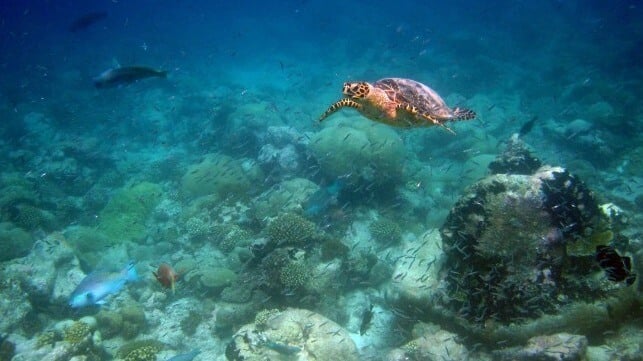Study: Chagos Marine Protected Area Shows Value of Extra-Large MPAs

The ongoing global effort to protect at least 30 percent of the world’s oceans by 2030 have sparked renewed interest by governments to establish marine protected areas. While achieving this ambition is important for biodiversity conservation, some researchers have questioned the effectiveness of MPAs. A 2023 study that examined 184 MPAs around the world found that 27% of them could be classified as ‘paper parks’ – areas which are legally designated, but ineffective in achieving marine conservation goals.
However, a new study published last week revealed immense benefits of very large MPAs – VLMPAs, larger than 100,000 square kilometers - in the conservation of large migratory ocean animals. The study was led by a team of researchers from Exeter and Heriot-Watt universities in UK as well as the charity Zoological Society of London (ZSL). The study assessed the impact of the Chagos Archipelago MPA in the Indian Ocean. The Chagos MPA was designated back in 2010 under British administration, and it remains one of the world’s largest MPAs at 640,000 square kilometers. The MPA also hosts world’s largest contiguous undamaged reef area as well as a network of seamounts and open ocean areas. This intersection of marine habitats makes the area a biodiversity hotspot.
The researchers tracked hawkbill turtles, reef manta rays and three seabird species: red-footed boobies, brown boobies and wedge-tailed shearwaters. All these animals move far and wide within the Chagos MPA to forage, breed and migrate. The results show that 95% of tracking locations were recorded inside the MPA, proving that it is large enough to protect these wandering animals.
In addition, the researchers assessed the impact of a hypothetical smaller MPA (less than 100,000 km2). The team found that more than 90 percent of manta and turtle locations would still be in protected waters. However, just 59 percent of all seabird locations would be inside the smaller MPA, as the birds travel over a larger area.
“Our results provide clear evidence for the value of the Chagos Archipelago VLMPA for protecting a diverse range of large and mobile marine species,” said Dr. Alice Trevail from the University of Exeter. This could not come at a better time, with the anticipated change in sovereignty of Chagos Archipelago to become part of Mauritius. In this context, the study’s findings show the value of keeping the entire MPA intact after the transition.
The co-author of the study, Dr. Ruth Dunn from Heriot-Watt University, added that the study also provided ground-breaking insights on the benefits of VLMPAS, which should be seen as a priority for future long-term protection to ensure survival of marine biodiversity.
[1]
[2]
